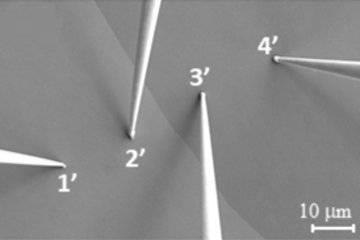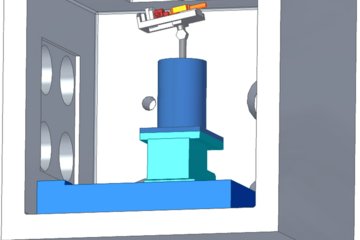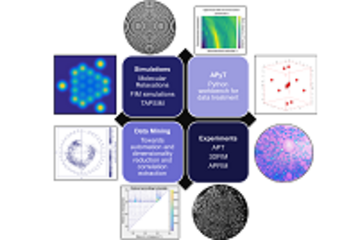All genres
161.
Journal Article
A QM/MM approach for low-symmetry defects in metals. Computational Materials Science 118, pp. 259 - 268 (2016)
162.
Journal Article
Multiscale description of carbon-supersaturated ferrite in severely drawn pearlitic wires. Acta Materialia 111, pp. 321 - 334 (2016)
163.
Journal Article
First-principles investigation of hydrogen interaction with TiC precipitates in alpha-Fe. Physical Review B 93 (18), 184108 (2016)
164.
Journal Article
Electron and chemical reservoir corrections for point-defect formation energies. Physical Review B 93 (16), 165206 (2016)
165.
Journal Article
Influence of magnetic excitations on the phase stability of metals and steels. Current Opinion in Solid State and Materials Science 20 (2), pp. 77 - 84 (2016)
166.
Journal Article
Multiscale modeling of hydrogen enhanced homogeneous dislocation nucleation. Acta Materialia 107, pp. 144 - 151 (2016)
167.
Journal Article
Quaternary Al–Cu–Mg–Si Q Phase: Sample Preparation, Heat Capacity Measurement and First-Principles Calculations. Journal of Phase Equilibria 37 (2), pp. 119 - 126 (2016)
168.
Journal Article
Ab initio-guided design of twinning-induced plasticity steels. MRS Bulletin 41 (4), pp. 320 - 325 (2016)
169.
Journal Article
Combined atom probe tomography and density functional theory investigation of the Al off-stoichiometry of κ-carbides in an austenitic Fe–Mn–Al–C low density steel. Acta Materialia 106, pp. 229 - 238 (2016)
170.
Journal Article
Ab Initio Determined Phase Diagram of Clean and Solvated Muscovite Mica Surfaces. Langmuir 32 (4), pp. 1027 - 1033 (2016)
171.
Journal Article
Impact of magnetic fluctuations on lattice excitations in fcc nickel. Journal of Physics: Condensed Matter 28 (7), 076002 (2016)
172.
Journal Article
Ab initio Prediction of Martensitic and Intermartensitic Phase Boundaries in Ni–Mn–Ga. Physical Review Letters 116 (2), 025503 (2016)
173.
Journal Article
Partitioning of Cr and Si between cementite and ferrite derived from first-principles thermodynamics. Acta Materialia 102, pp. 241 - 250 (2016)
174.
Journal Article
The structure and dynamics of chitin nanofibrils in an aqueous environment revealed by molecular dynamics simulations. RSC Advances 6 (36), pp. 30710 - 30721 (2016)
175.
Journal Article
Difference in linear polarization of biaxially strained InxGa1-xN alloys on nonpolar a-plane and m-plane GaN. Physical Review B 92 (24), 245202 (2015)
176.
Journal Article
Mechanisms and kinetics of the migration of grain boundaries containing extended defects. Physical Review B 92 (17), 174115 (2015)
177.
Journal Article
Ab initio thermodynamics of the CoCrFeMnNi high entropy alloy: Importance of entropy contributions beyond the configurational one. Acta Materialia 100, pp. 90 - 97 (2015)
178.
Journal Article
Structural transformations among austenite, ferrite and cementite in Fe–C alloys: A unified theory based on ab initio simulations. Acta Materialia 99, pp. 281 - 289 (2015)
179.
Journal Article
Development and application of a Ni–Ti interatomic potential with high predictive accuracy of the martensitic phase transition. Physical Review B 92 (13), 134107 (2015)
180.
Journal Article
From wetting to melting along grain boundaries using phase field and sharp interface methods. Computational Materials Science 108 (B), 6403, pp. 293 - 300 (2015)











